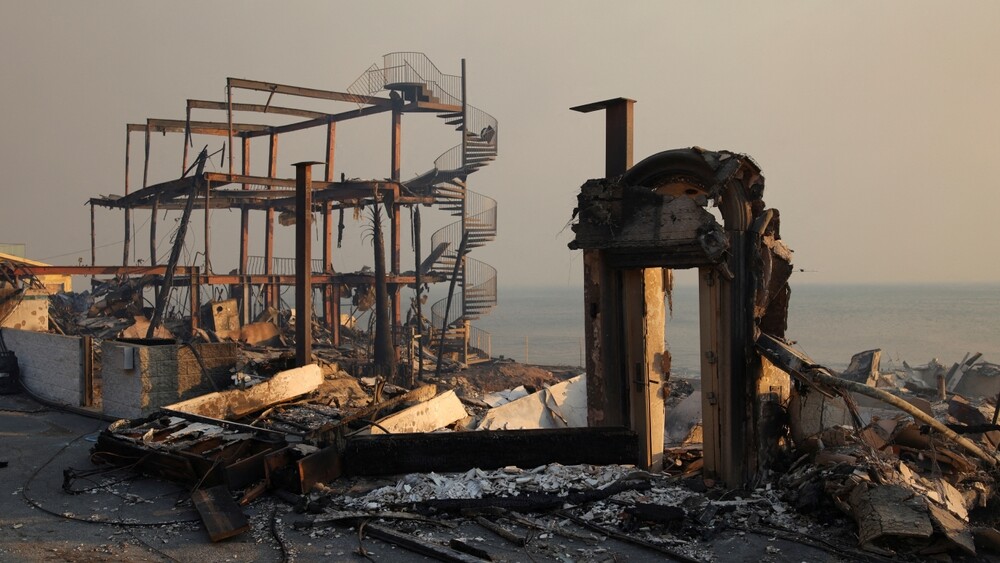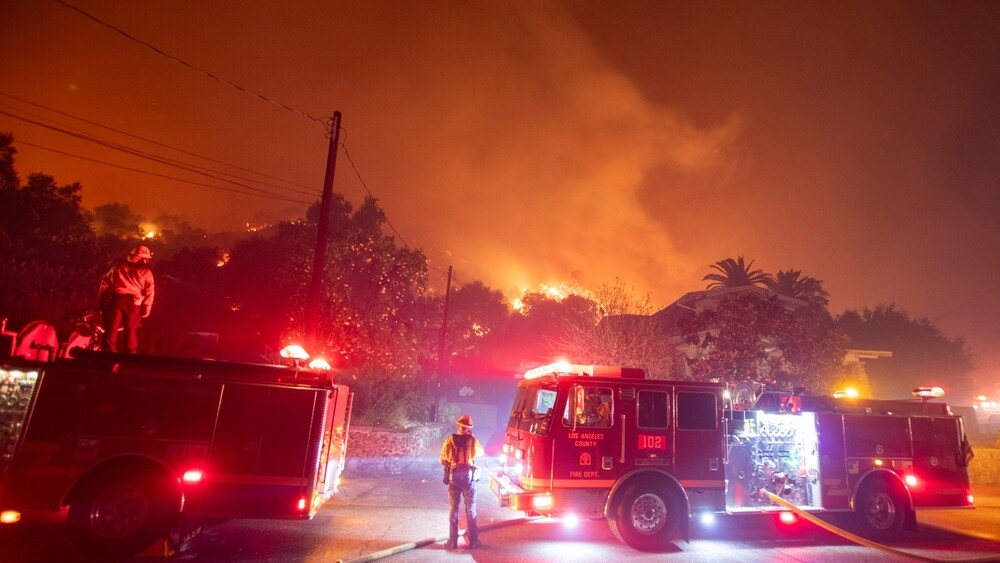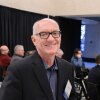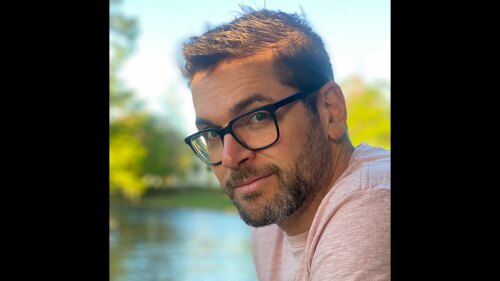![07[1].jpg](https://cdn-ul.uli.org/dims4/default/b5c1709/2147483647/strip/true/crop/4287x2414+0+473/resize/1000x563!/quality/90/?url=https%3A%2F%2Fk2-prod-uli.s3.us-east-1.amazonaws.com%2Fbrightspot%2F5a%2F1c%2Fe19541d341af8104a918d841326e%2F071.jpg)
A team meeting during the development of the 175-page Project Recovery report. Pictured: Kev Zoryan, founder, Arselle Investments; Lew Horne, president, CBRE Greater Los Angeles Region; Tim Kawahara, executive director, UCLA Ziman Center; Kellie Kao Miles, executive director, ULI Los Angeles; David Waite, partner, Cox, Castle & Nicholson; and Steve Matt, CEO, MATT Construction.
GUILLERMO QUEZADA
The recent fires in Los Angeles—the worst disaster in the city’s history, having caused as much as $130 billion in damage—arguably could not have come at a worse time. Los Angeles was already suffering a housing-shortage crisis. Development approval systems here are overburdened and sluggish. Fire insurance is out of reach for many homeowners near fire zones. Even the concept of urban wildfires was a shock: Climate conditions pushed fires “normally” confined to canyons and hills deep into higher-density neighborhoods and could do so again.
Despite the headwinds to rebuilding quickly and efficiently, just after the worst of the fires, ULI Los Angeles joined UCLA Ziman Center for Real Estate and the USC Lusk Center for Real Estate to shape a response plan, created in just six weeks.
The comprehensive, 175-page Project Recovery report—reflecting expertise among nine high-level working groups—provides tangible goals as it identifies recovery roadblocks and proposes actionable recommendations. Its main areas of focus are:
- Standardizing debris removal protocols to expedite property owners’ safe return
- Fast-tracking rebuilding efforts by enhancing permitting, including with “self-certification”
- Addressing labor and supply-chain issues that hamper construction with such innovations as a builders alliance
- Stabilizing California’s property insurance market to ensure continued coverage
- Offering mortgage forbearance to help victims return to their communities
- Introducing community rebuilding authorities to coordinate recovery efforts
- Securing funding for infrastructure restoration, with a focus on increased preparedness
Taking a client approach
The report was compiled by a team of more than 100 people, who identified and connected key stakeholders tasked with the mammoth job of rebuilding. Stakeholders include California Governor Gavin Newsom, Los Angeles Mayor Karen Bass, the L.A. City Council, the L.A. County Board of Supervisors, and the city of Altadena, as well as many others, such as business and community groups on the front lines of rebuilding.
The Project Recovery organizational chart is a who’s who of Los Angeles–based leaders in finance, development, academia, commercial real estate, law, construction, technology, insurance, and related industries. “Each one of these leaders is committed to a superior work product,” says Los Angeles’ incoming ULI Chair, Lew Horne. “All of our John Hancocks are on it, and we want to create a real public/private synergy. We’re not afraid of that.”
The approach toward these numerous stakeholders is one that Horne learned from his years as CBRE’s president for advisory services over Greater Los Angeles, Orange County, and Inland Empire region: Treat them like clients.
“If you are crystal-clear who your customers are, and you understand what they want and need, you’ll have a successful process and outcome,” says Horne. “In this case, those customers are Jane and Joe Resident.”
![01[1].jpg](https://cdn-ul.uli.org/dims4/default/5b8a787/2147483647/strip/true/crop/5880x3310+0+305/resize/1000x563!/quality/90/?url=https%3A%2F%2Fk2-prod-uli.s3.us-east-1.amazonaws.com%2Fbrightspot%2F0c%2F65%2F69d1b78e42779834f69acfefdc2e%2F011.jpg)
Steve Matt, CEO, MATT Construction; Mitch Menzer,partner, Cox, Castle & Nicholson; Kev Zoryan, founder, Arselle Investments; Kellie Kao Miles, executive director, ULI Los Angeles; Tim Kawahara, executive director, UCLA Ziman Center; Darcy Coleman, vice president, Alagem Capital Group; Lew Horne, president, CBRE Greater Los Angeles Region; Gadi Kaufmann, chairman, RCLCO ; and David Waite, partner, Cox, Castle & Nicholson.
Horne notes that, in addition to the ongoing team meetings, the report is still a working paper that is continually being added to and refined as needed. He underscored that the collaboration between ULI, UCLA, and USC involves careful organization and coordination among various groups to prevent any duplication of effort. Using a basketball metaphor, Horne observes that “Nobody is being a ball hog,” and he emphasizes that everyone involved is working together and passing the ball to the most appropriate player.
Just as Horne’s transition into his role as District Council Chair was beginning in early January, the unprecedented fires struck. The 2025 agenda for ULI Los Angeles already encompassed several pressing issues highlighted in the report, including the necessity for building-permit reforms. However, the urgency was intense: “So, I told the group who recruited me that we really need to pivot here and start brainstorming right away.”
For many issues that the report addresses, the research and data were already extant, waiting to be coordinated in Project Recovery recommendations. UCLA Ziman Center Executive Director Tim Kawahara notes that the university produced hundreds of studies.
“The UCLA Fielding School of Public Health researchers are testing air quality, conducting soil sampling, and studying hazardous exposure,” Kawahara says. “UCLA recently convened a blue-ribbon commission on climate action and fire-safe recovery in partnership with Los Angeles County Supervisor Lindsey P. Horvath. The UCLA Institute of Environment and Sustainability is focused on climate change. The UCLA School of Architecture and Urban Design and UCLA Labor Center have been very active. The Ziman Center also funded a study on the wildfires’ impact on Altadena’s Black community.”
Permitting and self-certification
Because the fires exposed many pre-existing problems, Project Recovery’s proposed solutions are crucial not only for rebuilding in fire zones but also for the future of the entire region. A key example is the fast-tracking of building permits. Immediately after the fires, Mayor Bass issued an executive order instructing all city departments to review building plans concurrently and complete them within 30 days of submission. (The city recently approved its first three residential plans since the fires.) Even so, the overburdened system requires approvals from as many as 12 city departments and is notoriously sluggish. Project Recovery authors, eager to see some good come from the crisis, urged the implementation of self-certification.
In line with the mayor’s executive order to create permitting centers in burn areas, the Project Recovery report states that those centers should be staffed by dedicated, trained, and licensed private-sector professionals who have worked with relevant public departments (e.g., planning, building and safety, recreation and parks, transportation, water and power, public works, fire department, housing). These professionals can inspect and self-certify building applications, relieving the city of this role, and thereby speeding up rebuilding.
“Time is not our friend,” says report co-author and land-use attorney David Waite, senior partner at Cox, Castle & Nicholson LLP and a member of the ULI Los Angeles Advisory Board. “The longer the lag, the less likely these communities [are to] come back, but we have to get it right. We already see an embrace of streamlined self-certification by the city and county bureaucracy. The heavy lifting will come in the enactment.”
The self-certification proposal is another example of how existing research conducted by the two universities dovetails into the Project Recovery report. UCLA Ziman Center Director Stuart A. Gabriel and team have produced studies detailing how, citywide, “less than 60 percent of multifamily projects [that were] issued permits since 2010 have been completed, requiring an average of 47 months.” The time-lag is even longer on a per-unit basis, “taking an average of 60 months per unit,” and worsening the crisis of the unhoused.
Regarding self-certification, Gabriel was adamant about adopting it. “There is no choice,” he says. “The private sector has the expertise to assess requests for permits and approvals. With quick orientation, those parties in the private sector will do just fine. It adds enormous capacity in a time of exigency.”
Eligible projects would include single-family homes, accessory dwelling units, apartments, and small commercial projects. The report also recommends using new digital technologies that facilitate self-certification and can compress 12 city departments into a one-stop shop.
Builders alliance
Other innovations could also extend beyond the immediate crisis. Even assuming self-certification is up and running, there will be logjams due to the sheer number of homes that must be rebuilt. The permit process is just one of many issues already delaying construction and upping costs. Other issues include labor and materials shortages, factors that may worsen under President Donald Trump’s tariff policies (increasing lumber costs) and immigrant-deportation policies (shrinking numbers of workers).
In response, Project Recovery advises creating a builders alliance, offering “turnkey rebuilding solutions to property owners who prefer not to hire an architect, find a contractor, and undertake rebuilding on their own.” Such homeowners could purchase a predesigned and preapproved home, which the report estimates can help “reduce the cost of rebuilding to half or less of what it might cost a homeowner to go it alone.”
The builders alliance could pool materials and marketing costs, buying at bulk scale and establishing hubs close to burn areas for the deployment of labor and storage of materials. The concept parallels the way masterplan communities with multiple builders are already developed, except that in this case it is applied to the rebuilding of destroyed neighborhoods. Among the large, national builders in the alliance is Brookfield Residential, whose president and CEO, Adrian Foley, is helping to create a “pitch book” that he will soon deliver to the full building alliance. Builders in the alliance include Lennar, Landsea Homes, and Toll Brothers, among others.
“I think we’ll get a high degree of take-up from them because we’ll be convincing,” says Foley. “Consumers will be attracted to it, too. We will have already done all the work of floor plans, site plans, et cetera, that fall within the allowable square footage. We would provide the pricing along with the design. In the meantime, and in the background, the builders will have [gathered] trade contractors ready to work.”
Foley compared the concept to what happens in high-density, urban masterplans such as Playa Vista, in West Los Angeles, where Brookfield was both masterplan developer and one of several homebuilders. “There, we had labor-control measures on site with a logistics team. During some periods, we had up to 65 acres [26 ha] under construction at the same time, within a tight geographical area. We shared data on trades and efficiencies.”
The alliance is even talking about creating temporary housing near rebuild zones, “So the workers can stay on site and work efficiently all week long,” Foley says.
Another large developer/builder is SunCal. It is not part of the builders alliance, but its managing partner, Matt Keenen, is supportive while pointing out the difficult differences from most masterplans: “Planning, design, financing will be hard, because this is not a standard greenfield or brownfield site. There will be ownership hurdles to solve before private capital could come into play. But I can see a situation where a handful of homeowners could enter into a development agreement on a smaller scale. It can’t happen all at once.”
As the country’s largest builders gear up, smaller firms are already taking orders. Build Back Better L.A. sprung into life immediately after the fires as a consortium of architects (VTBS), entitlement and zoning experts (Craig Lawson & Co.), structural engineers (Labib Funk + Associates), general contractors (West Builders), and even insurance brokers (Eternal Innovations LLC) to offer a one-stop shop. The consortium’s collective local knowledge and track record in the Palisades area has already attracted three families. Build Back Better L.A. also offers its service to fire victims who can reduce cost and timing by joining with their neighbors.
“Our goal is to help the many people who have lost so much,” says VTBS Principal Navy Banvard. “We don’t view it as an enterprise. Our business model is to rebuild as inexpensively as possible, so we’re reducing our hourly rates and [can] barely cover our costs.”
The obstacles to rebuilding remain massive. All Project Recovery solutions require coordination among many parties and industries. The report has already established communication among them, though, and if some of its innovations successfully take hold—as the report’s authors suggest—the entire region may benefit.
“I’m optimistic,” says Foley. “As a builder, we’ve seen great benefits for ourselves as organizations and people in this marketplace. And this tragedy is on our doorstep. We have choices: we can shrug our shoulders, or we can try to do something.”
Related reading:
- Urban Land Institute, UCLA, USC Release Comprehensive Roadmap for Post-Wildfire Rebuilding in Los Angeles
- Rebuilding in the Aftermath of L.A.’s Unprecedented Urban Fires, Amid an Already Pressing Housing Crisis
- Holding on to Altadena: Rebuilding to Preserve Housing Wealth
- January 2025 Economist Snapshot: Los Angeles Wildfires Recovery Will Be Costly and Lengthy







